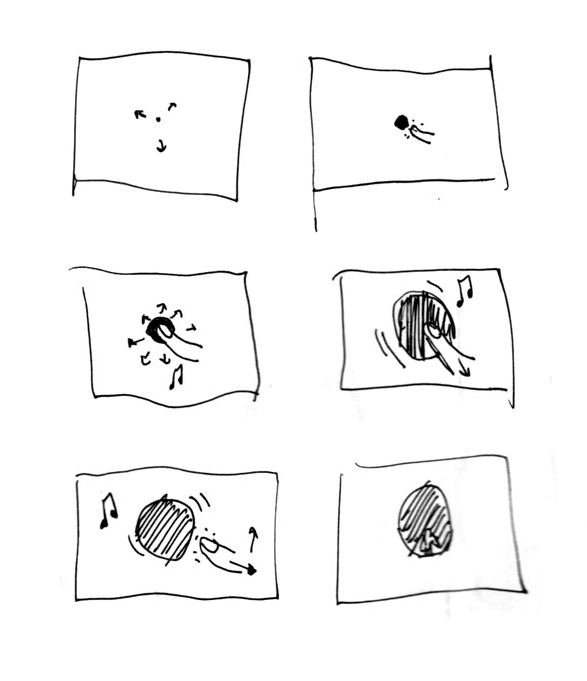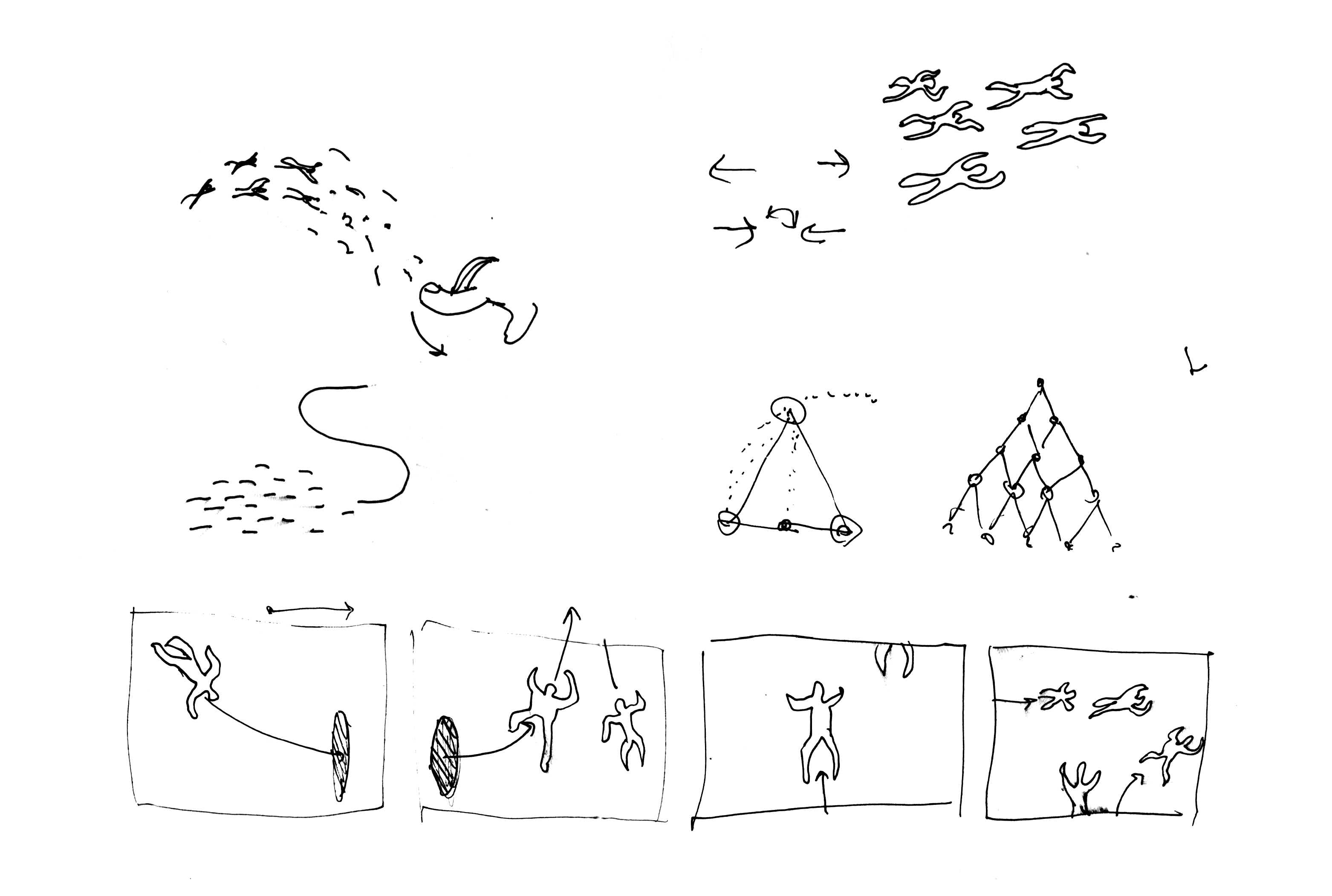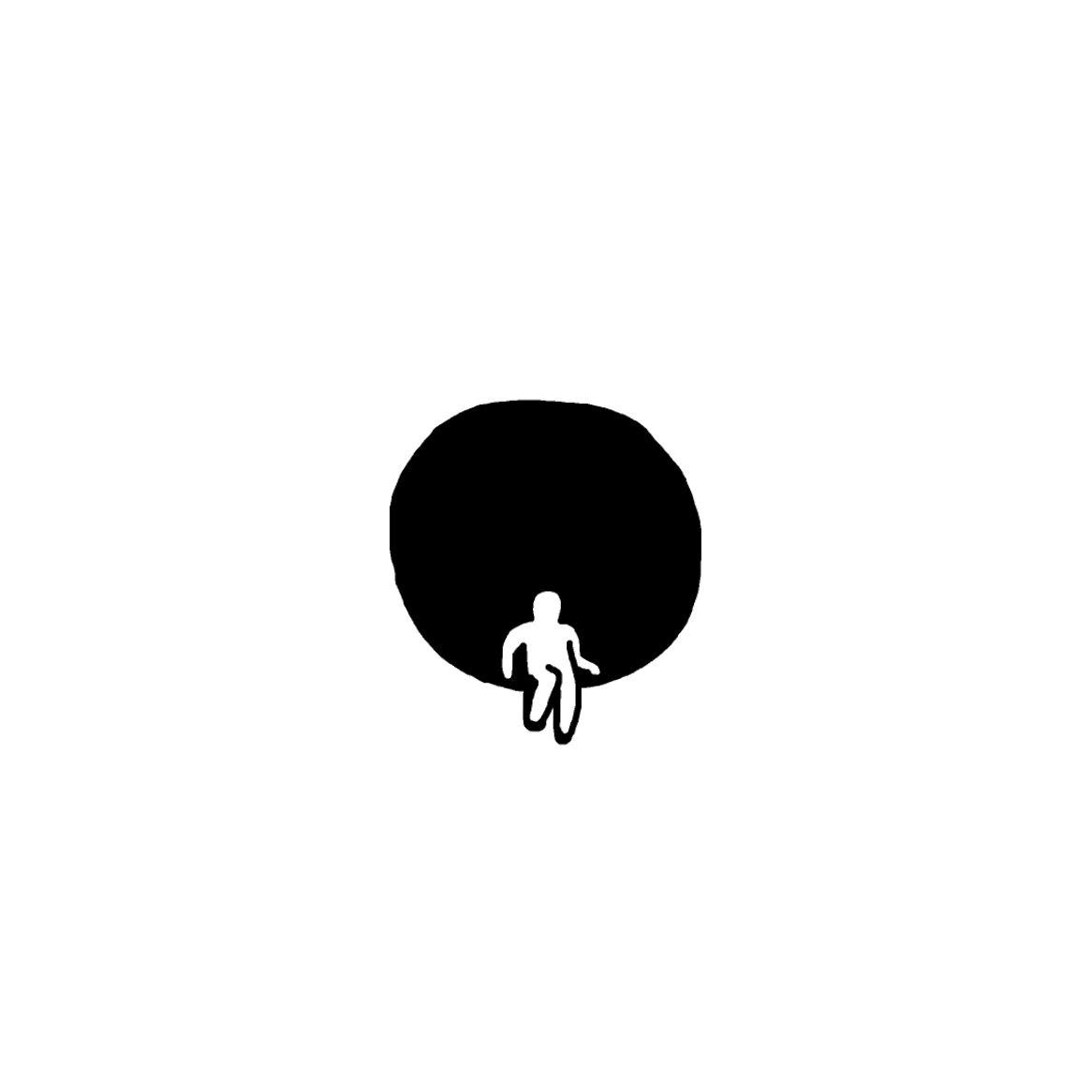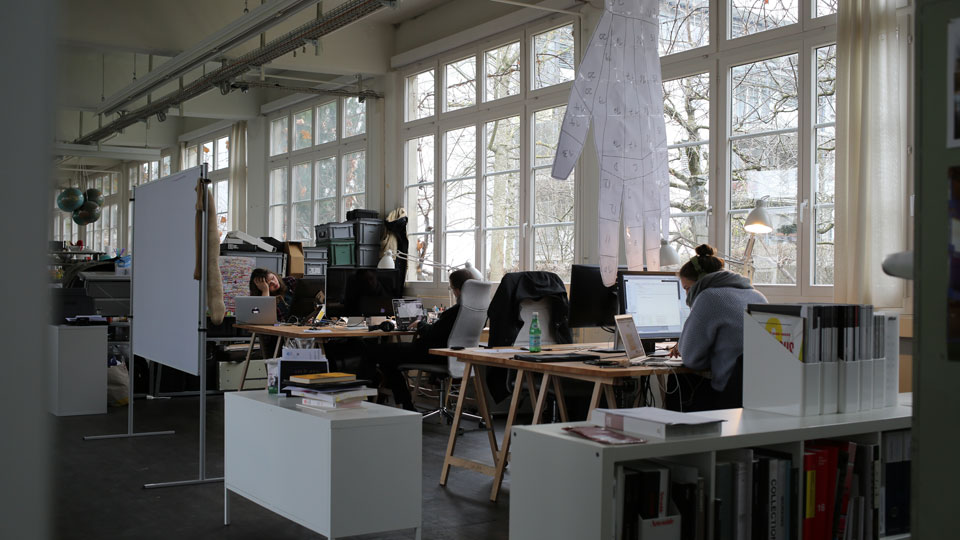KIDS Process
May 28, 2021
KIDS is a project by Michael Frei and Mario von Rickenbach.
This page documents the development of the animated film, game, and installation chronologically.
2016
One of the first technical breakthroughs was thanks to a test by the ingenious Raphael Munoz. Instead of using taxing algorithms for moving crowds in scenes, he implemented a physics engine to calculate character movement.
Michael missing.
Recording of a recording session with the Riga Cathedral Boys' Choir and composer Olav Lervik.
The recording took place in an old church with a creaky wooden floor. The boys' movements were very audible in the recording. Olav painstakingly removed the creaking in post.
The hole was a mouth that could whisper and sing.

Hole interaction ideas.

Stretchy hole.
Kids moving through a hole in the wall.

Swim interaction ideas.
Underwater holes.
Moving through different screens in water.
First water surface prototype.
Testing different scales for different screen sizes. The plan was for the design to work on any screen size, from a tiny phone to a huge cinema screen.
Kids writing KIDS.
Entering the world with visible footsteps.
Drag and drop interaction, "inspired" by the mascot of a popular map service.
Moving in groups.
Singing practice.
Testing different line widths.

Testing a slightly larger head size. Unacceptable.

From tryouts to the final design.

At this stage of the project, the characters entered the world through a hole in the wall. It was confusing.

Michael designed a beautiful font, as he did previously for Plug & Play. We use it for many things, even invoices.
Final walk animation.

We hired two interns: animator Anaïs Voirol (now an independent animation director) and interaction designer Mylène Dreyer (now at Apple Inc.), who helped us for half a year. They also created their own game Out Of Order as well as a pessimistic Holiday Card, and cooked delicious lunches during their time with us.
2D animation is tedious. To feel a sense of accomplishment, we sometimes exported the animation, arranged it in an interesting way, and looked at it in a loop while drinking to numb the pain.

The purpose of the flowchart was to visualise and understand the naming scheme for the animation. We appreciate logically named image sequences.

We used an online spreadsheet to keep track of the animation progress. Martine Ulmer helped us with much of the animation.

The animation of the KIDS character consists of ~5000 frames.
Continue to 2017

